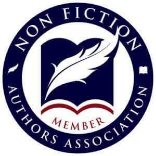Reviews

Reviews

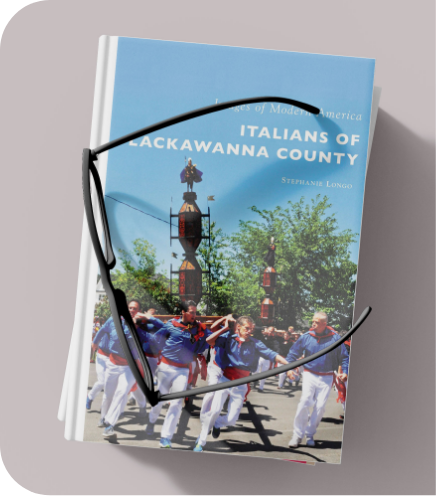
“Stephanie Longo has rightly earned the reputation as a foremost expert in Pennsylvania Italians. Author of several books, she provided a mastery of historical accounts and records in the outstanding Italians of Lackawanna County. Another book, just as good, if not better, is her Italians of Northeastern Pennsylvania.
Stephanie writes, ‘Statewide, roughly 784 people in Pennsylvania in 1870 were born in Italy. In 1900, this number had risen to 484,207.’ Today, Pennsylvania and Northeastern Pennsylvania, in particular, contain one of the highest concentrations of Italians in the country. Stephanie reminds us that many Italians came to work the coal mines and railroads and settled in large numbers in Scranton, Pittston, Dunmore, Wilkes-Barre, Hazleton and Carbondale.
Stephanie has lived much of her life in Lackawanna County. This and adjacent Luzerne County make up Northeastern Pennsylvania. She dedicates the book to her grandparents Joseph and Anna Mascaro Longo as true examples of what it means to be Italian-American in Northeastern Pennsylvania.
Stephanie’s research is truly exemplary. Her inventory of historical photographs bring special visual context to her writing. There are pictures of the small cramped hovels people lived in Campania, Calabria and Sicily. They remind us of the dire circumstances that Italians sought to escape from when coming to America.
Stephanie shares several stories of how Italians were sometimes persecuted in Northeastern Pennsylvania. Once, a priest at an Italian parish received an anonymous letter that threatened to dynamite the church unless all Italians left the area.
Fascinating anecdotes, historical records and insightful commentary make up Italians of Northeastern Pennsylvania. Stephanie loves the human side of history and it shows. So many photographs come with mini stories. One black and white photograph, taken in 1924 in San Cataldo, Sicily, shows Vincent Palermo and his wife and family. The Palermos left Italy to escape fascism, but were refused entry at Ellis Island because Anna had vision problems. Instead of returning to Italy, however, they entered the United States through Canada. The Palermos went to Throop upon arrival, but later moved to Dunmore, where they sold produce. She goes on to say they had three more children after they settled in America.
Italians of Northeastern Pennsylvania is another marvelous book by Stephanie Longo. She is a writer who reinforces the pride we all have in our Italian American roots. What an outstanding book!

“Stephanie Longo knows Lackawanna County well. She is a writer who specializes in the ethnic makeup of Eastern Pennsylvania. She now gives us an extraordinary book that pays special tribute to this specific region in Pennsylvania in Italians of Lackawanna County.
Pennsylvania was founded by Quakers and Protestant Independents 400 years ago. What was once a colony has become a state of people from different countries and of different creeds. Pennsylvania is now more Roman Catholic thanks to the influx of many Italians. Stephanie writes: ‘Lackawanna County’s Italian festival season begins in May with ‘La Corsa dei Ceri,’ or the Race of the Saints, in Jessup and ends in September with a festival in honor of Our Lady of Constantinople in Old Forge. In between these festivals are other observances, processions, and celebrations—all tied to keeping ethnic traditions alive and celebrating those who came from all over Italy to settle in the region.’
Many photographs of Roman Catholic processions are in the book with informative captions to bring greater depth to the celebrations. In the Race of the Saints, we see various teams of men dressed in different colors. This is contained in a chapter focused on religion. Other chapters precede and follow with photographs and well-researched commentary to espouse different aspects of Italian life here such as work, family and culture.
How and why Italians came to this region might be summed up in one word: Coal. Stephanie writes: ‘When the first wave of Italian immigrants arrived in Lackawanna County from regions such as Umbria, Campania, Calabria, and Sicily, they had to work a variety of jobs, such as farmers and skilled laborers. However, the chief employer for Italian immigrants arriving in Lackawanna County was the anthracite coal mining industry.’
This books brightly shines upon achievements of the county’s Italians. There is Gino Merli, a Congressional Medal of Honor recipient in World War II. We read about Anthony and Frank Suraci and the Parodi Cigars they founded. We read about the Parise family and the stone monuments they have created over the years. So many more stories of important Italian Americans are included.
Italians of Lackawanna County is a marvelous book that espouses, not only the special attributes of Italians, but, moreover, Americans. Ours is a great country because of our people. We commend Stephanie for adding one more book in the record of America’s greatness.”

“Italians of Northeastern Pennsylvania is not the first book Stephanie Longo dedicates to the history and presence of Italian immigrants in North America. With her considerable efforts, Longo is helping to fill the void that still makes the experiences and lives of these people largely unknown. Italians of Northeastern Pennsylvania presents hundreds of pictures showing the immigrants from the beginning of their journey to America and accompanies them in every step of their new life. It shows the native towns and cities of the immigrants, the ships that brought them to the new world, the jobs they found, their meetings during summer, and religious processions. Longo also points out that the group suffered discrimination. In this way, Italians of Northeastern Pennsylvania offers a complete overview of the lives of these people.
Italians of Northeastern Pennsylvania combines short but informative notes and beautiful images. Longo is an expert in this subject. The fact that she tells the stories of the immigrants giving prominence to visual elements allows readers to understand the people’s conditions and sympathize with them. The pictures reveal how hard their lives were, but also that they could enjoy simple pleasures. Italians of Northeastern Pennsylvania shows the many sides of integration in North America. It has been a long and often difficult process, but it was successful in the end. I think that this book is an excellent way to discover a little-known piece of ethnic history in North America. It is also a good way to understand a different culture that is still thriving in this part of the world.”
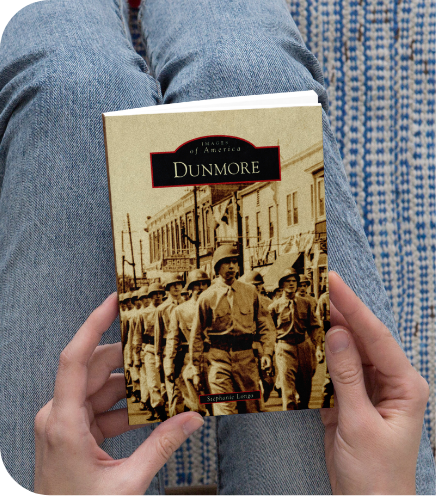
“Images of America: Dunmore is a nonfiction historical book written by Stephanie Longo. Longo has been the Dunmore municipal beat reporter for Go Lackawanna, a position she admits some journalists dread. For her, however, the assignment has enabled her to trace her family’s hometown since her ancestors settled there in 1927 down to its founding, and to chart the growth of the town since 1754 when ownership of the land on which it sits was transferred to the Susquehanna Company of Connecticut by the Delaware tribe. Longo shares stories about the history of many of the businesses in the area, shining a spotlight on restaurants, some of which are still operating to this day. Likewise, she traces the development of the first public school systems in Dunmore and the many Catholic schools which served the Catholic residents whose families, like hers, emigrated from Italy, Ireland, Poland, and other parts of Europe. She also describes the town’s festivities marking its 150th anniversary in 2012. Longo provides archival maps and documents as well as numerous photographs celebrating her historic hometown.
Stephanie Longo’s Images of America: Dunmore offers readers an opportunity to learn about American history as seen from the perspective of one town in Pennsylvania. I loved learning about the area and getting a feeling for the living history that Dunmore embodies. Longo’s work is beautifully written and presented, and her inclusion of numerous photos makes the journey she shares even more fascinating. I especially loved her presentation on the 1962 anniversary festivities. While the historical photos are compelling, the recent nature of this celebration strikes a chord of immediacy that was the perfect capping point for the historical narrative. The reader is brought from the dim recesses of the past right into the present, and it’s quite marvelous to see. Images of America: Dunmore is highly recommended.”
Awards

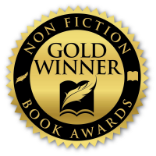
Non Fiction Book Awards Gold Winner, History Category 2019
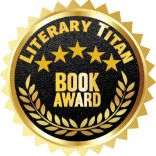
Literary Titan Gold Award Winner 2019
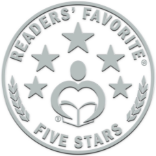
Readers’ Favorite Five Stars
